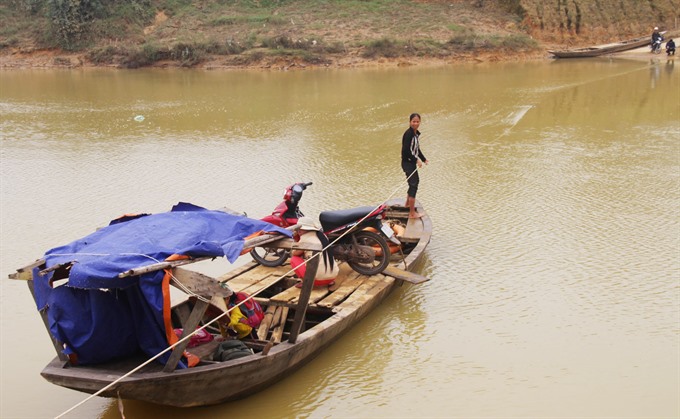 Society
Society

Hundreds of students in central Hà Tĩnh Province risk their lives every day, commuting to schools on unsafe bridges and via obsolete boats.
 |
| A woman ferries students via boat, pulling a rope connecting two opposite riverbanks. — Photo motthegioi.vn |
HÀ TĨNH — Hundreds of students in central Hà Tĩnh Province risk their lives every day, commuting to schools on unsafe bridges and via obsolete boats.
Students in the province’s Lộc Yên Commune in mountainous Hương Khê District travel daily across the local Ngàn Sâu River to go to school. The outdated Hương Yên Bridge is built low, and during the rainy season, it gets inundated following heavy rainfall or sudden currents from the upper part of the river.
Nguyễn Đình Cảnh, a local resident, said the currents that fly atop the surface of the bridge after inundation are very strong and commuters can be easily swept away as the bridge has no fencing.
Earlier in July, strong currents from the water released by a local power plant swept three commuters away, but residents nearby managed to rescue two persons. Đinh Văn Sơn, a student of Grade 11, was found dead later in the water, two days later.
The river is among the streams that gets water after each release of the Hố Hô power reservoir.
Heavy rains following a tropical typhoon and depression in the last two years have led to frequent floods along the river, which means long periods of the bridge being unusable due to inundation. A flood earlier this month kept the commune isolated for 10 days.
Nguyễn Chí Thiên, deputy chairman of the commune’s People’s Committee, said the bridge is the only means of getting across for a community of 1,000 people, including 50 students.
In Phú Gia, another commune in the district, the recent flood swept away three people, who were travelling on a similar bridge, and they were later found dead in the water.
Students in Hương Thủy, another commune in this poor district, have to travel via obsolete wooden boats to go to school. Often, the boat does not just carry students, but also other commuters and motorbikes. During flooding season along the river, the boat moves only by hand pulling a rope connecting two opposite riverbanks.
Lê Đình An, a local, said residents in the commune have been expecting a bridge for decades and they have to rely on the unsafe boats despite a risk to children on board, as it is the only means of transport.
Nguyễn Văn Phú, a commune official, said the boats operating along the river do not comply with safety requirements but no ban can take effect. “In case they are banned, locals would bring smaller boats to ferry their children to schools, which means more danger during flooding season,” he said.
According to Lê Ngọc Huấn, chairman of the district People’s Committee, 18 out of 22 communes in the district are separated by rivers, including Ngàn Sâu, Sông Tiêm and Rào Trổ.
“Bridges spanning the rivers are almost obsolete and have degraded but the district’s budget is sufficient to replace only some of them. Others require more funds and we have to rely on budget allocation from provincial authorities,” he said.
Hương Thủy Commune has gained approval for the construction of a bridge with government support and a site for its construction is currently being examined. — VNS




